A teaser image of Hyundai's latest high-performance N concept - the RN30 – has been released ahead of its Paris Show debut.
Concept Car, Hot Hatch, Motorshow, News
Concept Car, Hot Hatch, Motorshow, News
A teaser image of Hyundai's latest high-performance N concept - the RN30 – has been released ahead of its Paris Show debut.
Elite Model Management has teamed up with Hyundai, using the new Tucson to scout new talent for its annual “Elite Model Look UK” competition.
Events, Hybrid, News, Family Car, Hatchback
The all new Hyundai IONIQ Hybrid debuted at a the Society of Motor Manufacturers & Traders (SMMT) Test Day.
Hyundai is launching a one-of-a-kind ‘FanDome’ experience in King’s Cross, London, in time for EURO 2016.
City Car, Electric, Hybrid, News
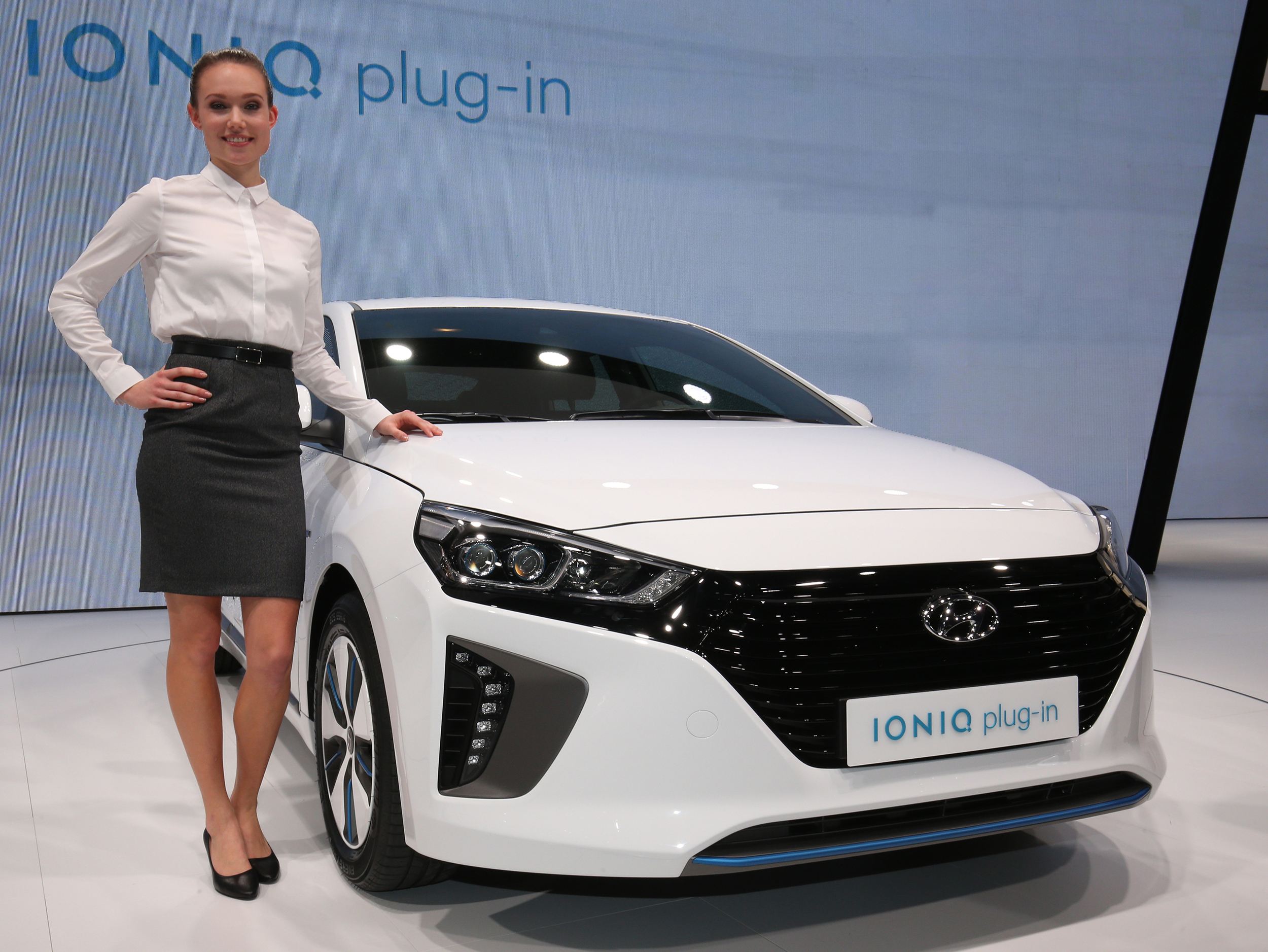
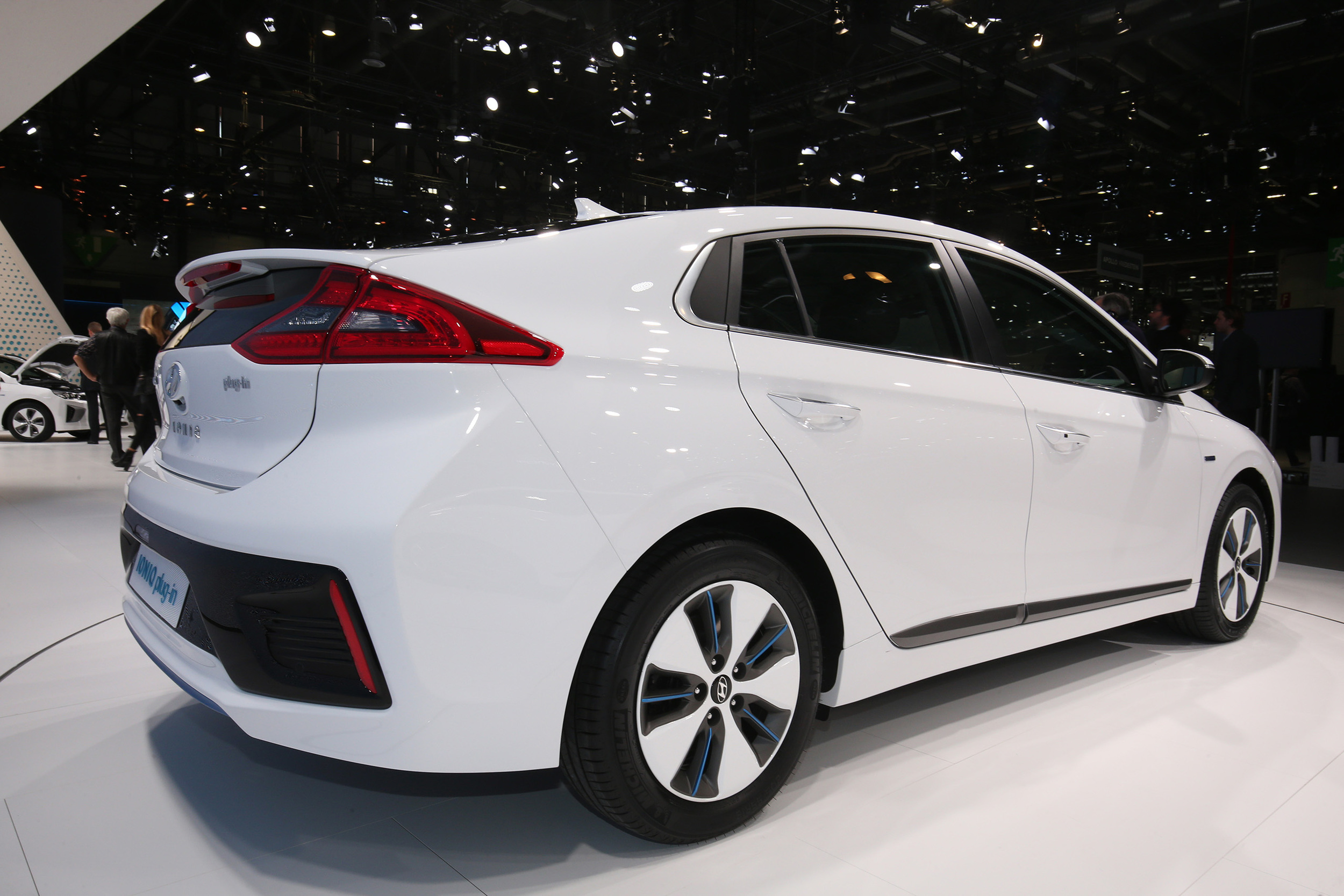
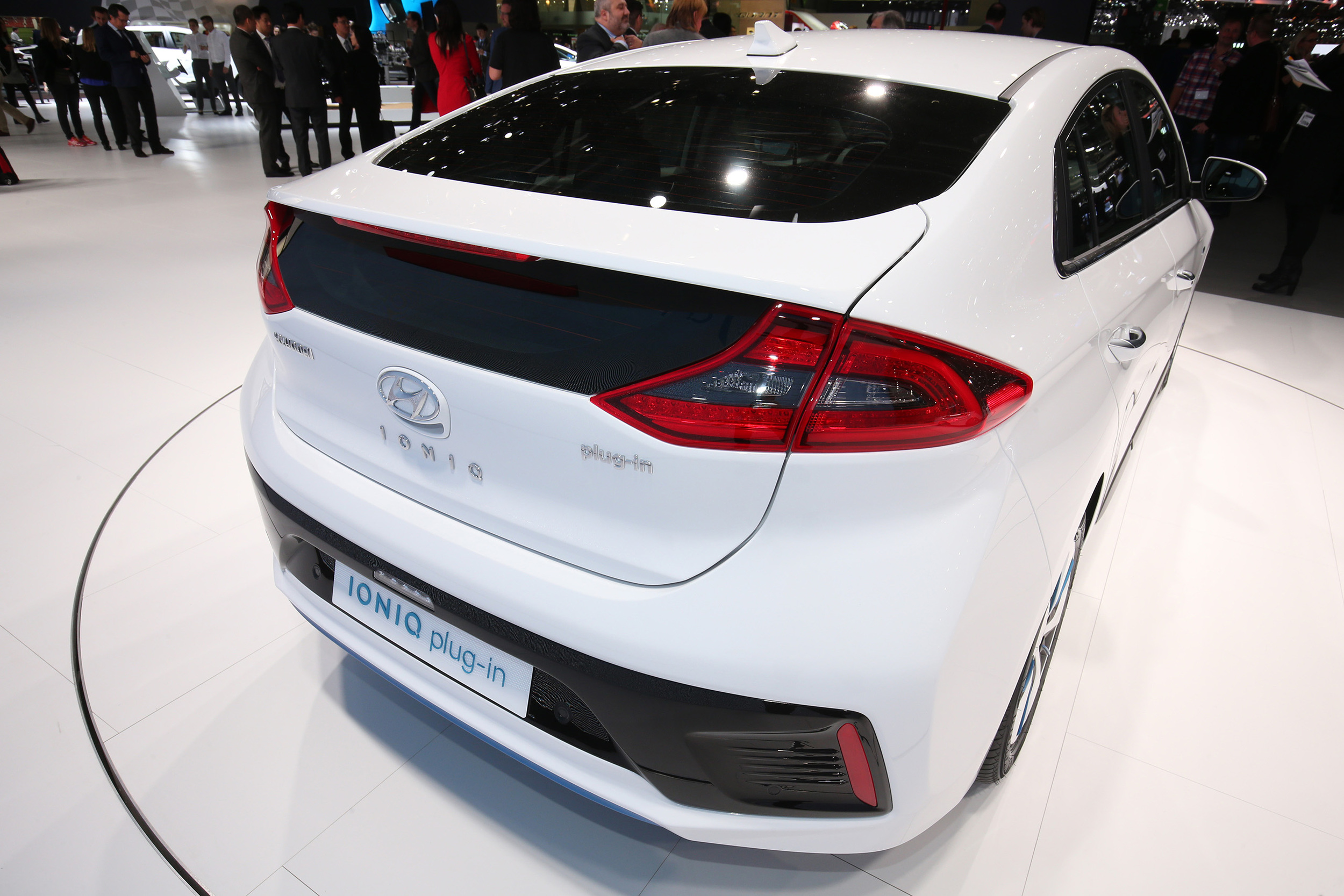

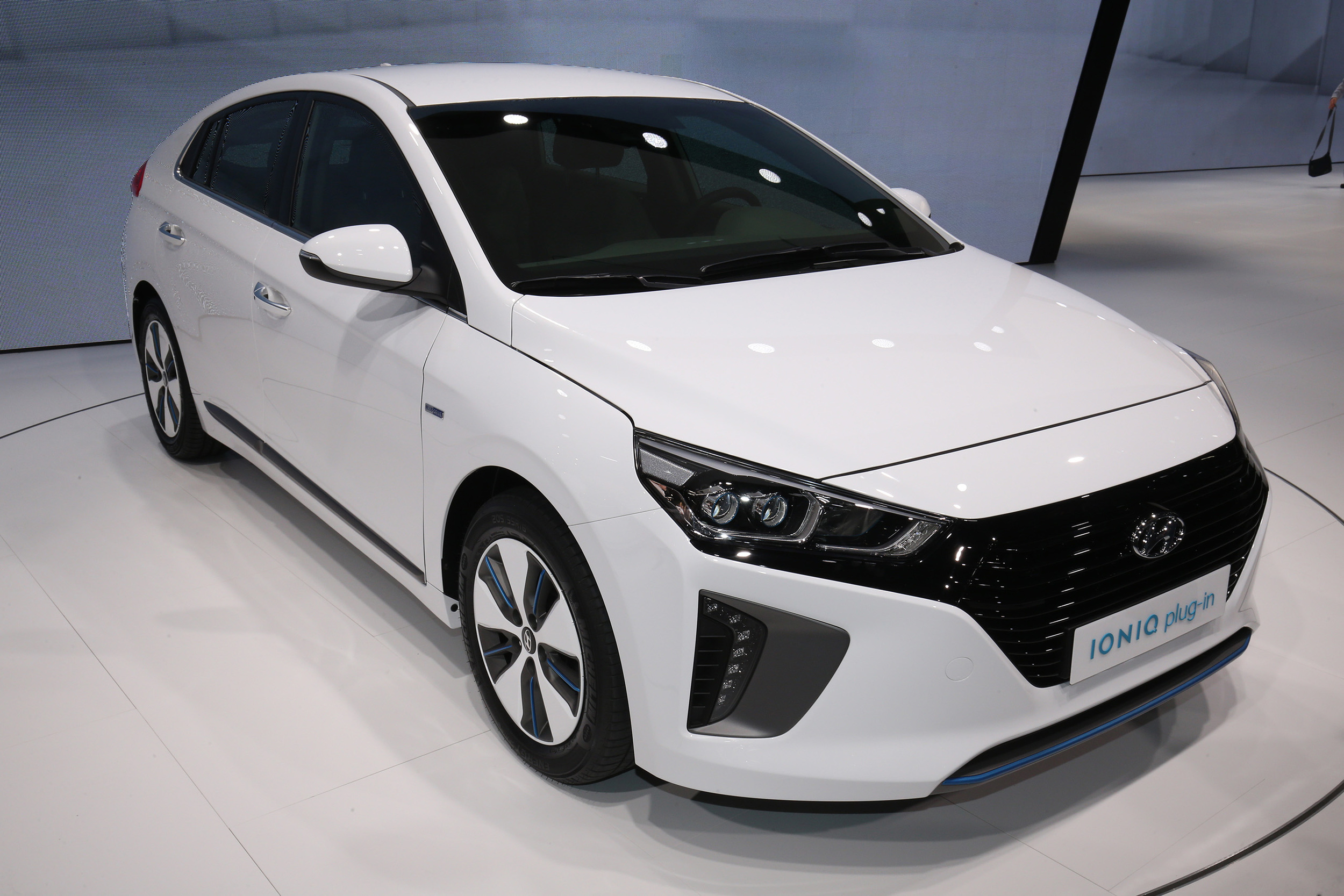
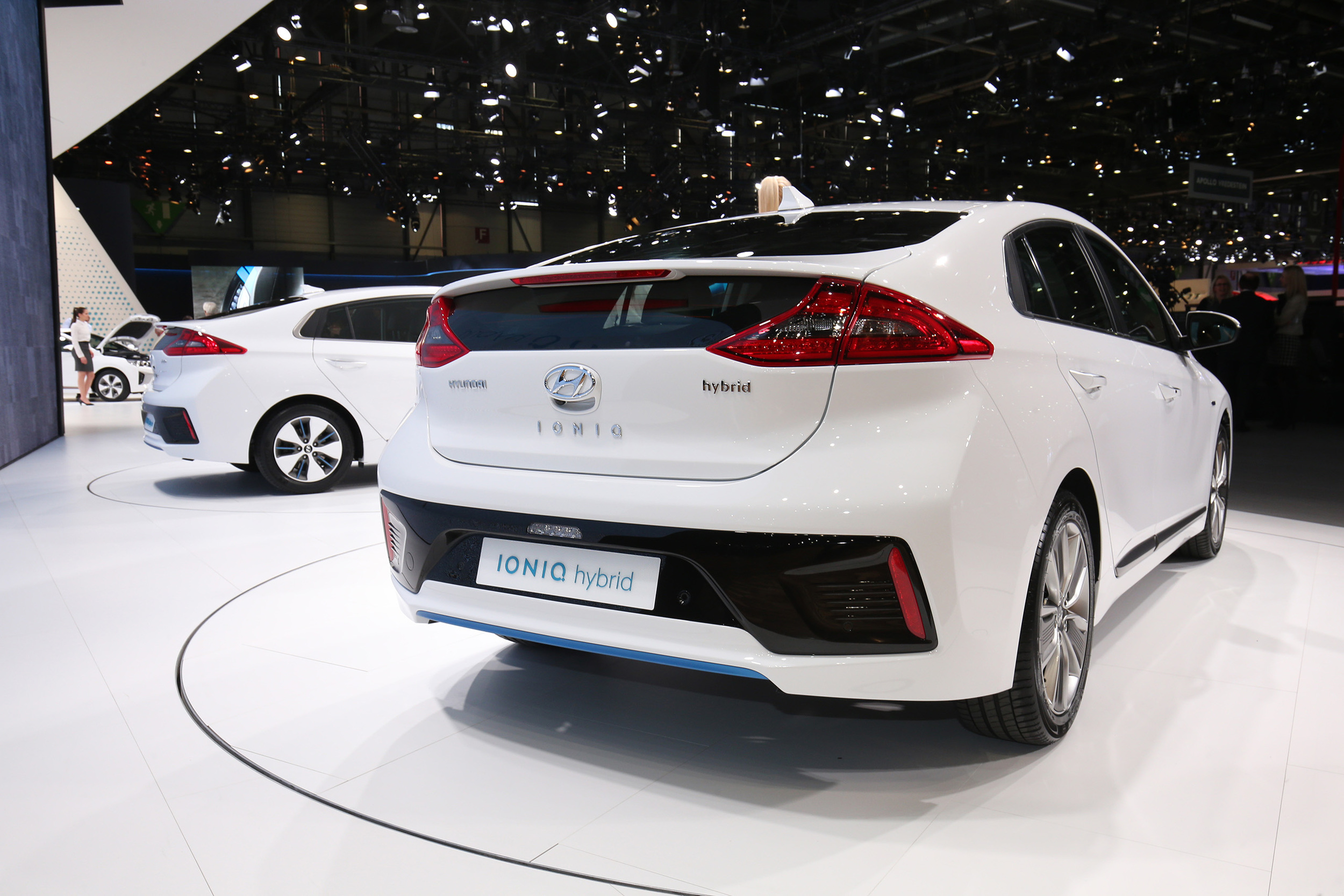
Hyundai pulled the covers off its all-new IONIQ electric line-up.
Consisting of the IONIQ Hybrid, IONIQ Electric and IONIQ Plug-in, the IONIQ becomes the world’s first model offering three electrified powertrains, says Hyundai. With the intention to offer low- to zero-emission mobility to everyone, Jochen Sengpiehl, Vice President Marketing at Hyundai Motor Europe, said: “IONIQ is an important step forward for our brand in Europe. We are bringing a unique new approach to e-mobility, with no compromise on great design, driving pleasure and new connectivity features. And we’re making it accessible to more customers, further extending our product line-up.”
The IONIQ Hybrid and IONIQ Plug-in both feature the new Kappa 1.6 GDI, direct injection petrol, four-cylinder engine with a thermal efficiency of 40 percent, delivering 105 PS and 147 Nm of torque. The engine has been tailored to the hybrid application and is combined with the direct responding, smooth shifting six-speed double clutch transmission. The mated electric motor enables pure electric driving and delivers instant torque as the chassis with rear multi-link suspension ‘greatly enhancing driving dynamics’.
The IONIQ Hybrid’s electric motor delivers 32 kW (43.5 PS) with maximum torque of 170 Nm, powered by a lithium-ion-polymer battery with 1.56 kWh capacity positioned under the rear seats. In combination with the 1.6-GDI engine, IONIQ Hybrid offers a system output of 103.6 kW (141 PS) rpm and up to 265 Nm of torque accelerating to a top speed of up to 115mph with targeted CO2 emissions as low as 79 g/km or lower (combined).
The IONIQ Plug-in can rely on over 31 miles of estimated pure electric driving range powered by the 8.9 kWh lithium-ion polymer battery. The 45kW (61 PS) electric motor together with the 1.6 GDI four-cylinder Kappa engine offer targeted CO2 emissions as low as 32 g/km.
The IONIQ Electric offers pure e-mobility through a 28 kWh lithium-ion polymer battery for an estimated maximum range of over 155 miles. The instantly available maximum torque of 295 Nm is delivered by the electric motor with a maximum output of 88 kW (120 PS) through the single-speed reducer transmission accelerating the car up to 103mph.
On the inside, ‘state-of-the art’ connectivity features include Android Auto, Apple CarPlay as well as TomTom live services and wireless charging of your smartphone. Furthermore, the driving experience becomes digital through the 7-inch TFT instrument cluster displaying all key driver information. Safety features include Autonomous Emergency Braking, Lane Keep Assist System, Blind Spot Detection, Rear Cross Traffic Alert and Smart Cruise Control ensures high safety levels for drivers and passengers alike.
All versions feature the sleek aerodynamic silhouette with a Cd value of 0.24 that complements the ‘soft lines’ and surfaces that trace the IONIQ’s outline.
Electric, Hybrid, Hydrogen Fuel Cell Car, News, Family Car


Following its unveiling to the media in South Korea, Hyundai has confirmed details of its next generation of hybrid vehicles, dubbed IONIQ.
Rag Jung, Head of Project Management Division at Hyundai's R&D Centre said, "IONIQ embodies Hyundai Motor's new thinking and bold ambitions for the future. This world-class dedicated hybrid will be the starting point of our future mobility."
Built on a chassis created specifically to carry the world's first choice of three efficient and ultra-low emission powertrains, the IONIQ contains 53% Advanced High Strength Steel combined with lightweight aluminum. The new model saves 12.6kg (45%) of weight by casting non-structural bodywork from aluminum, such as the hood, tailgate and suspension components. Where crash structure or energy absorption is necessary, the structure features Advanced High Strength Steel that can withstand significant collision forces.
The new model was created with 'dynamic ride and handling at its core', says Hyundai, setting it apart from other hybrid vehicles. Positioning the car's batteries low and forward achieves a low centre of gravity that enables responsive, stable cornering backed up by dual lower arm multi-link suspension fitted at the rear.
The full IONIQ range will feature a choice of electric, plug-in hybrid and hybrid powertrains, a world first for a single model. At the unveiling in Korea, details were shared for the first version to come to market - the hybrid.
With 40 percent thermal efficiency, the new 1.6-litre Kappa GDi engine developed exclusively for Hyundai's hybrid engines, combines with the permanent magnetic electric motor to deliver maximum outputs of 105PS and 47PS - engine and motor respectively.
The Lithium Ion Polymer Battery optimises output from the high voltage motor to allow for rapid regeneration while power distribution is controlled by a hybrid-exclusive Dual Clutch Transmission (DCT).
Hyundai claims power transmission efficiency of 95.7 percent will deliver a prompt response, acceleration performance and smooth gear changes to delight drivers with handling alongside the hybrid's efficiency.
Electric, Hatchback, Hydrogen Fuel Cell Car, Hybrid, News
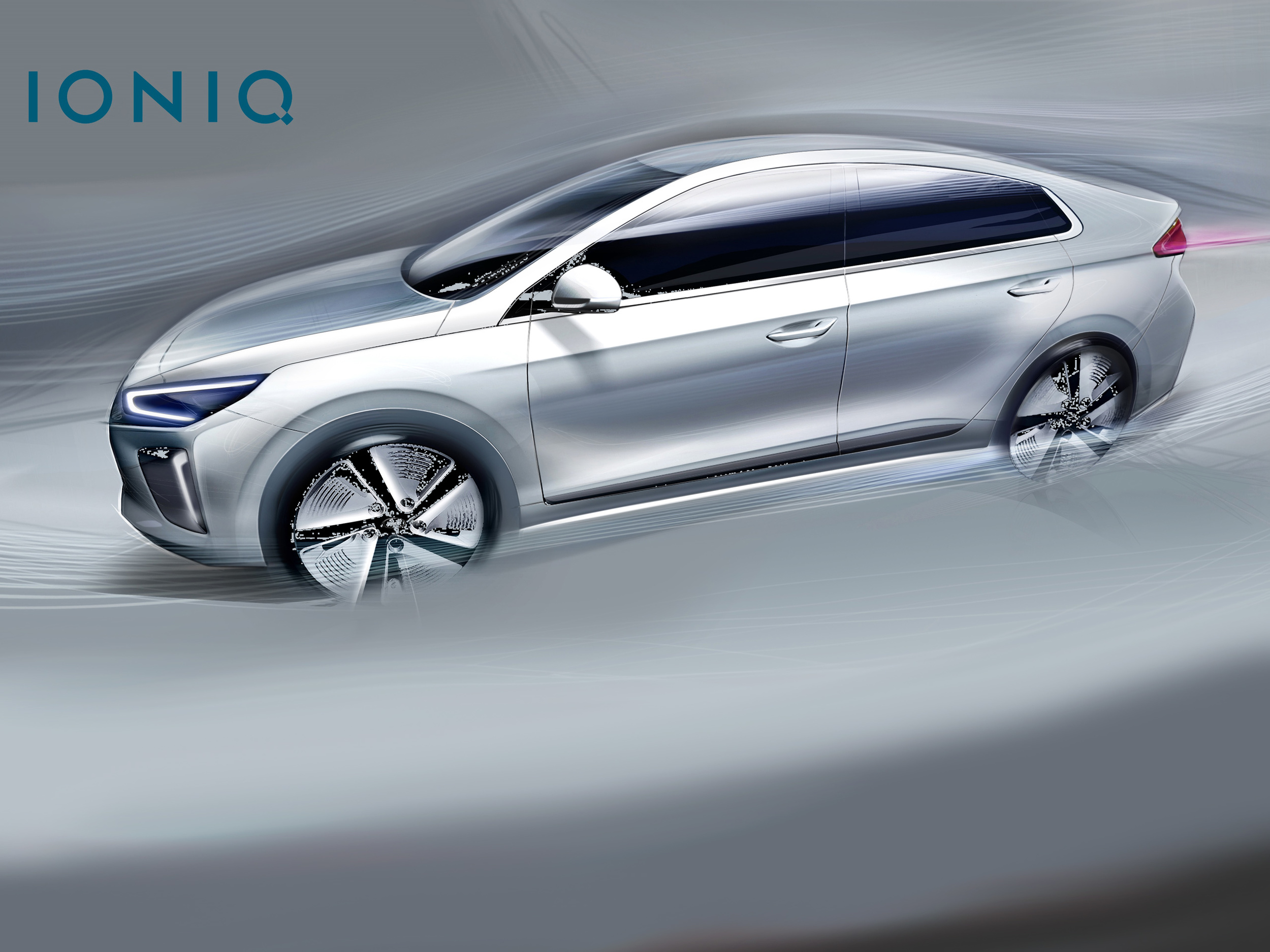
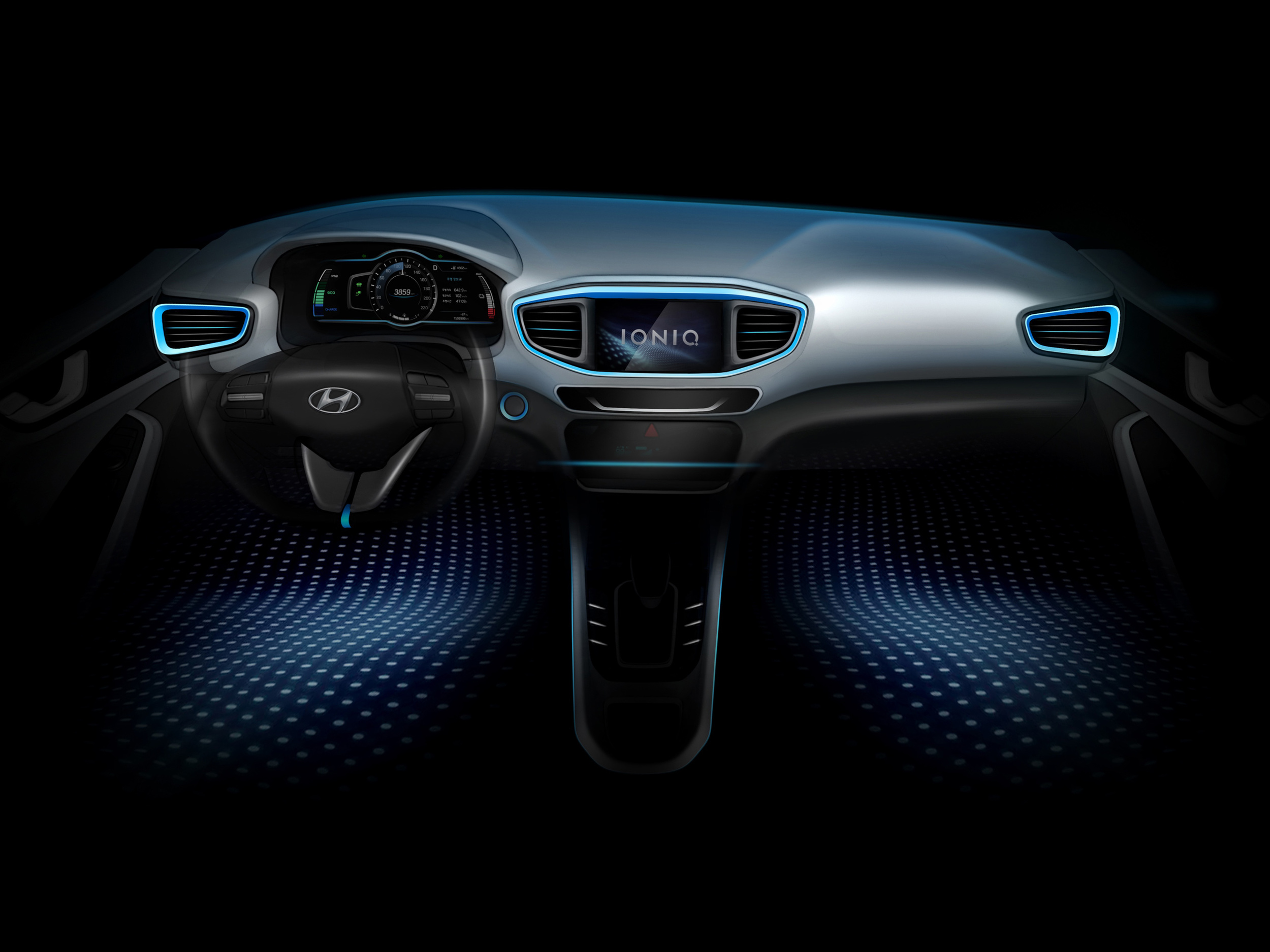
A new rendering of Hyundai’s all-new IONIQ hints at the looks of the alternative-fuel compact vehicle, which is due for launch in early 2016.
Hyundai has confirmed that the IONIQ will be the world’s first car to offer a choice of three ultra-low-emission powertrains: full electric, plug-in gasoline / electric hybrid, or gasoline / electric hybrid.
With a sleek, coupe-like silhouette, Hyundai says the IONIQ will deliver a fun and responsive driving experience, while also meeting the needs of those wishing to reduce the impact their motoring has on the environment.
At the front, it sports the familiar Hyundai hexagonal grille, topped by a gloss-black element that extends outwards to meet new headlamps featuring integrated ‘C’-position lights.
Inside the IONIQ the smooth, clutter-free theme continues. A clear, logical approach has been applied to the layout of control functions, with simple surfaces that make use of eco-friendly materials to convey, says Hyundai, ‘a futuristic yet warm cabin ambience that will appeal to a new generation of motorists’.
The IONIQ’s name references elements of its creation. An ion is an electrically-charged atom, linking to the car’s clever combination of electrified powertrains. The ‘I’ is said to reference the ‘unique offering it brings to the Hyundai range, demonstrating the brand’s environmental commitment and willingness to maximise choice for its customers’. Finally, the Q is depicted in the car’s logo as a visual breakthrough, acknowledging the fresh new approach of this advanced, low-emission model.
Following a world premiere in Korea in January, the IONIQ is due to be shown during March 2016 at the Geneva International Motor Show and the New York Auto Show.
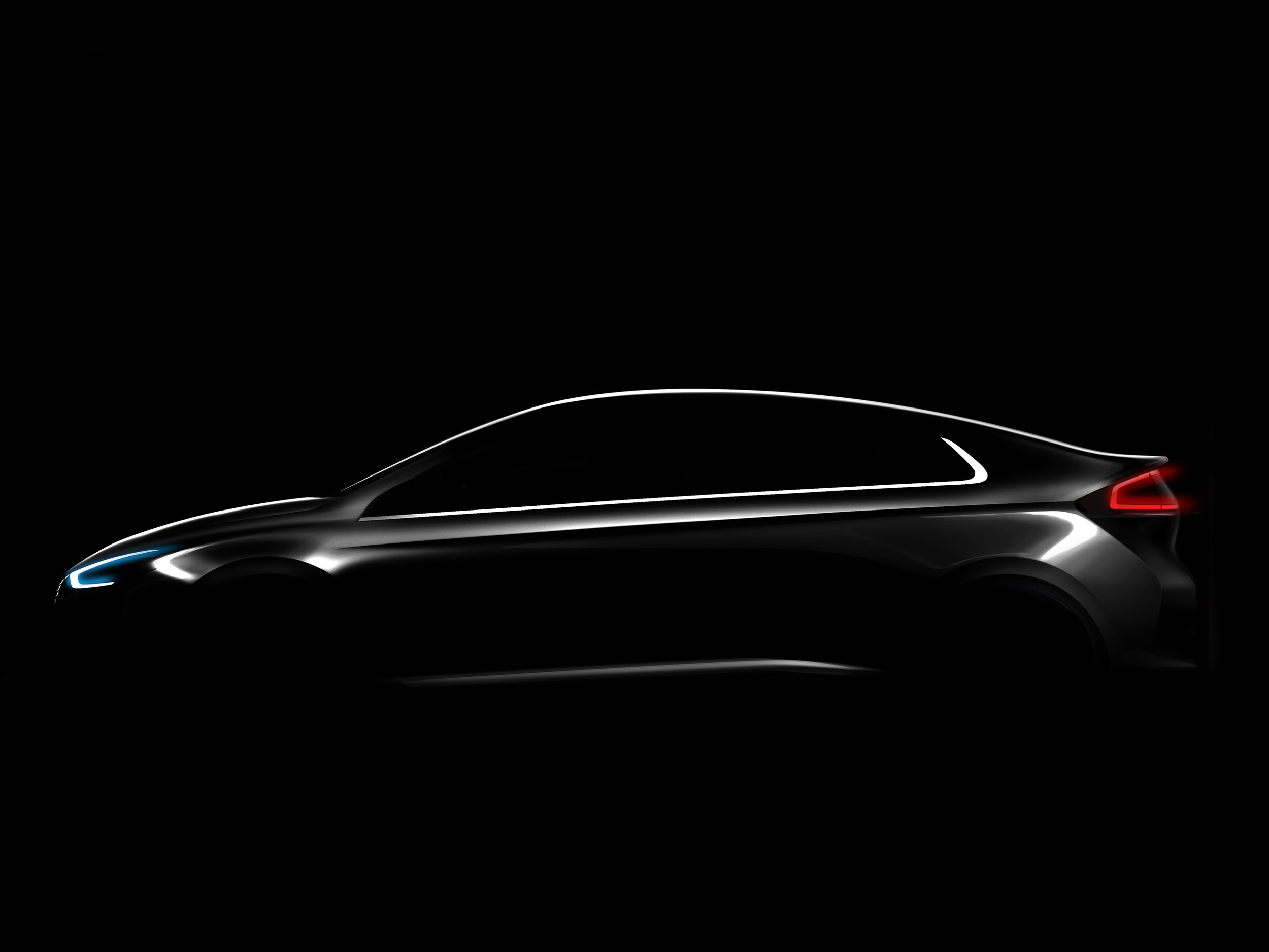
The car will be available with electric, plug-in petrol/electric hybrid, or petrol/electric hybrid powertrain - the first car from any manufacturer to offer these three powertrain options in a single body type. The IONIQ will combine 'class-leading fuel efficiency with a fun, responsive drive and attractive design, a unique mix not yet achieved by a hybrid vehicle' says Hyundai.
The new car's name references elements of its creation (with 'ion' representing an electrically-charged atom) and is based on an 'exclusive' new platform, made specifically for the car's multi-powertrain options. The chassis is optimised to deliver 'responsive handling' while remaining efficient in each of its three powertrain configurations.
In its fully-electric (EV) form, the IONIQ is powered by a high capacity, ultra-efficient lithium ion battery. The plug-in hybrid (PHEV) version combines a fuel-efficient energy with battery power obtained by charging the car with electricity, boosting its range while cutting its emissions. Finally, the hybrid (HEV) utilises the petrol engine and motion of the car to charge the on-board battery, which returns enhanced efficiency by supplementing the engine's power.
Woong-Chul Yang, Head of Hyundai Motor R&D Center said, "Hyundai Motor has a heritage of building innovative, fuel-efficient vehicles, so we are proud to advance our eco-friendly car line-up with the introduction of IONIQ. Our vision for future mobility focuses on choice, with a variety of powertrain options to suit customers' varied lifestyles, without compromising on design or driving enjoyment. IONIQ embodies Hyundai Motor's vision to shift the automotive paradigm and future mobility; IONIQ is the fruit of our efforts to become the leader in the global green car market."
Following its world premiere in Korea in January, the IONIQ is due to be shown at the Geneva Motor Show, followed by the New York Auto Show, both in March 2016.
Hydrogen Fuel Cell Car, SUV, News
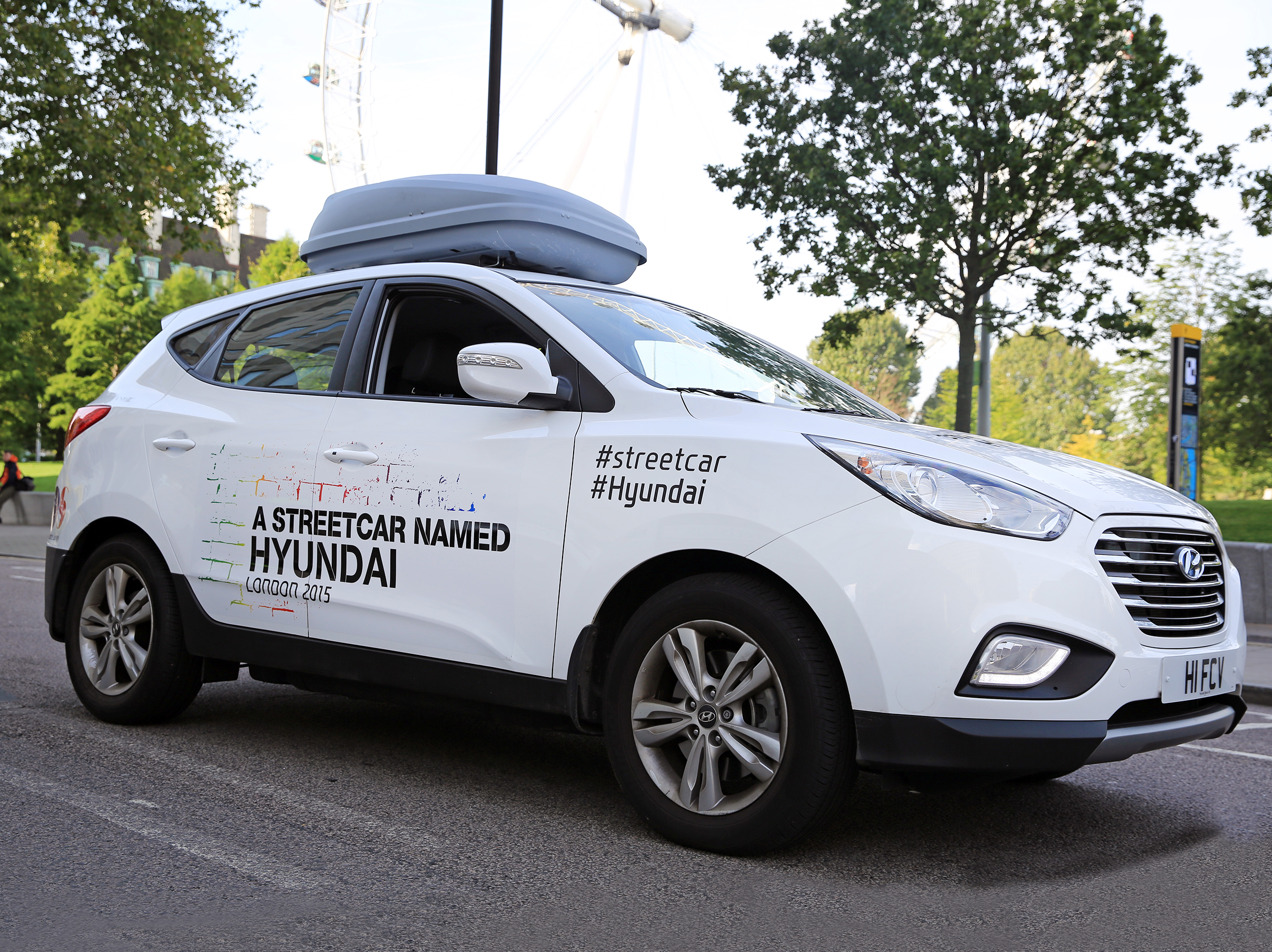
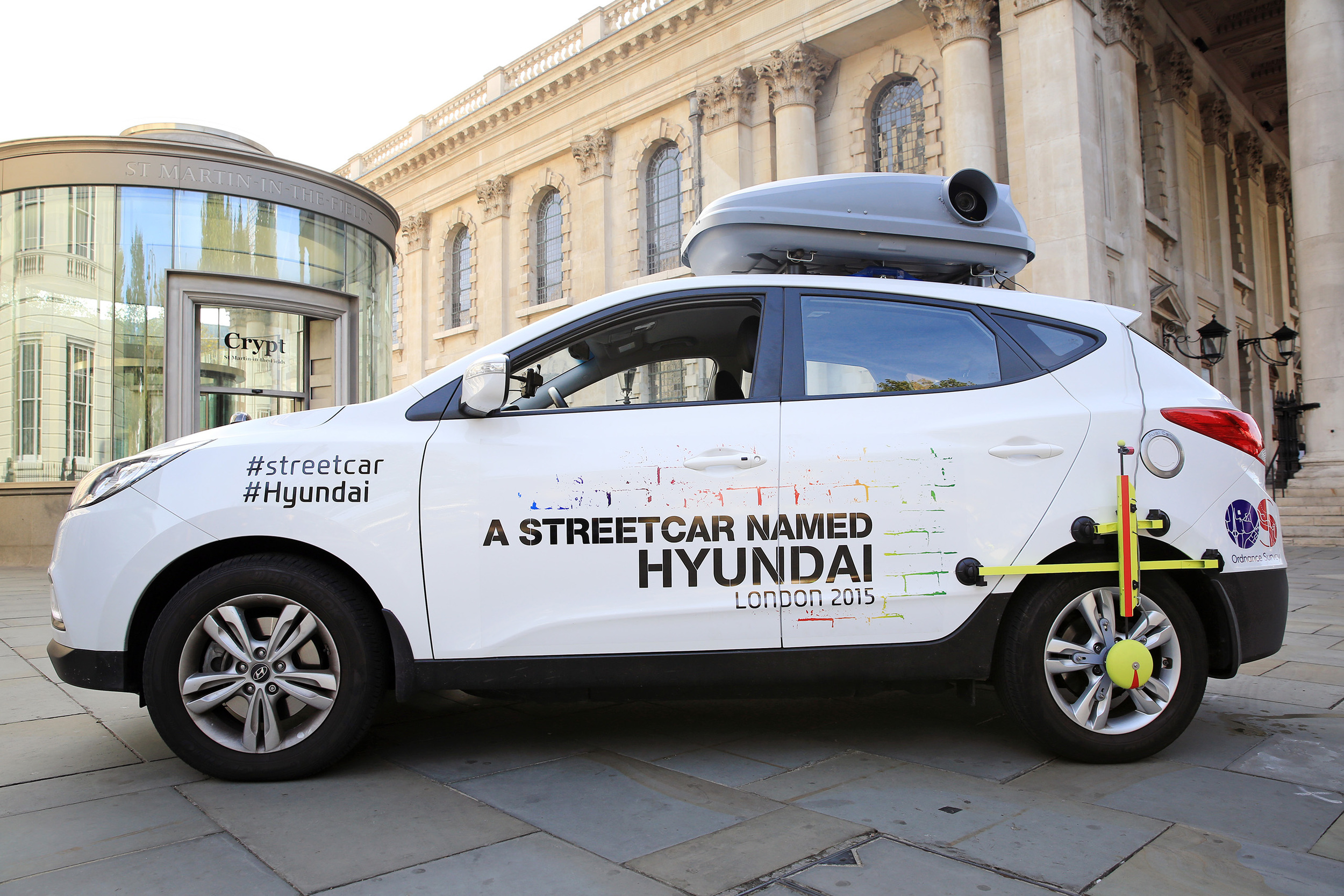
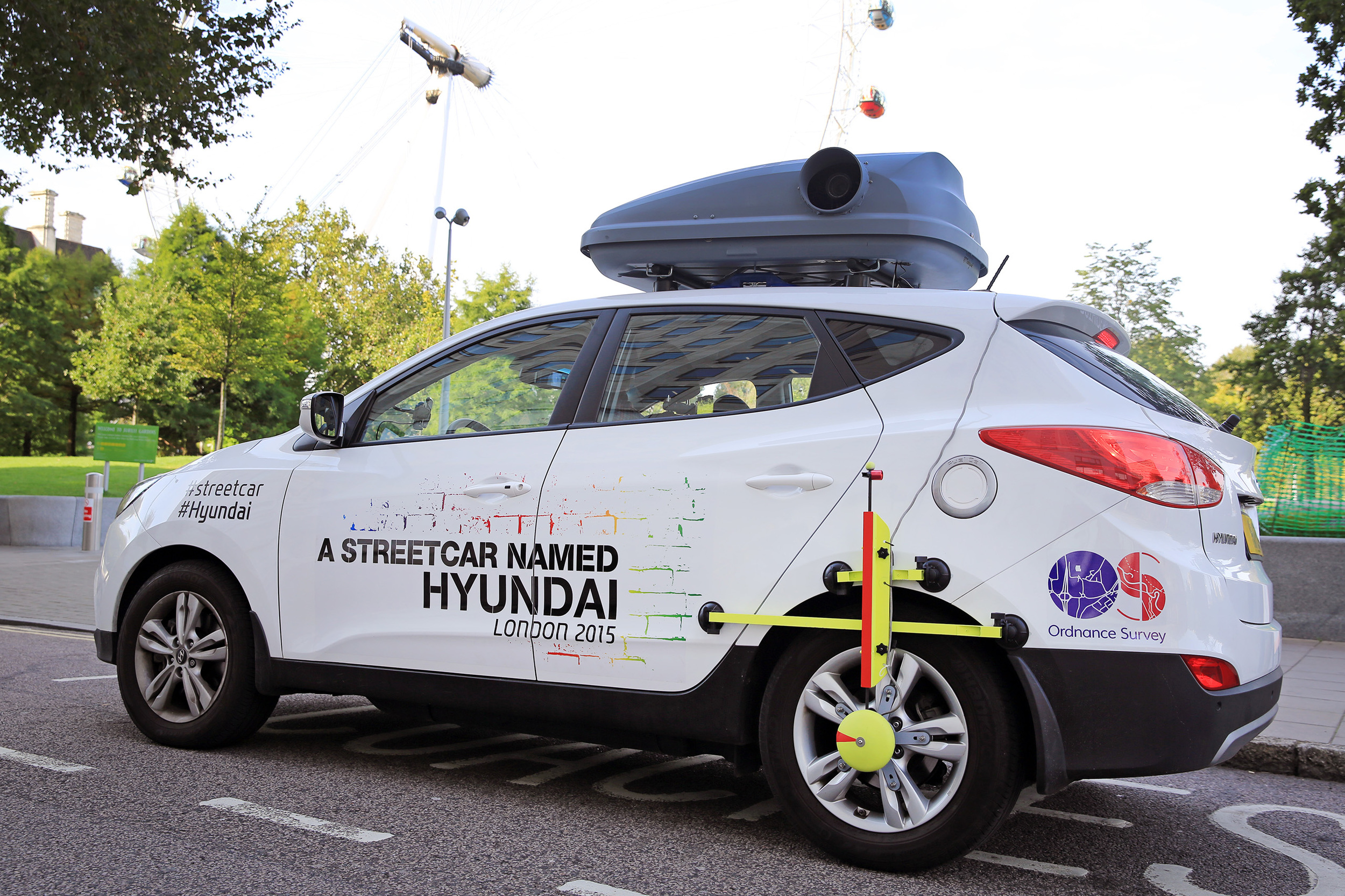
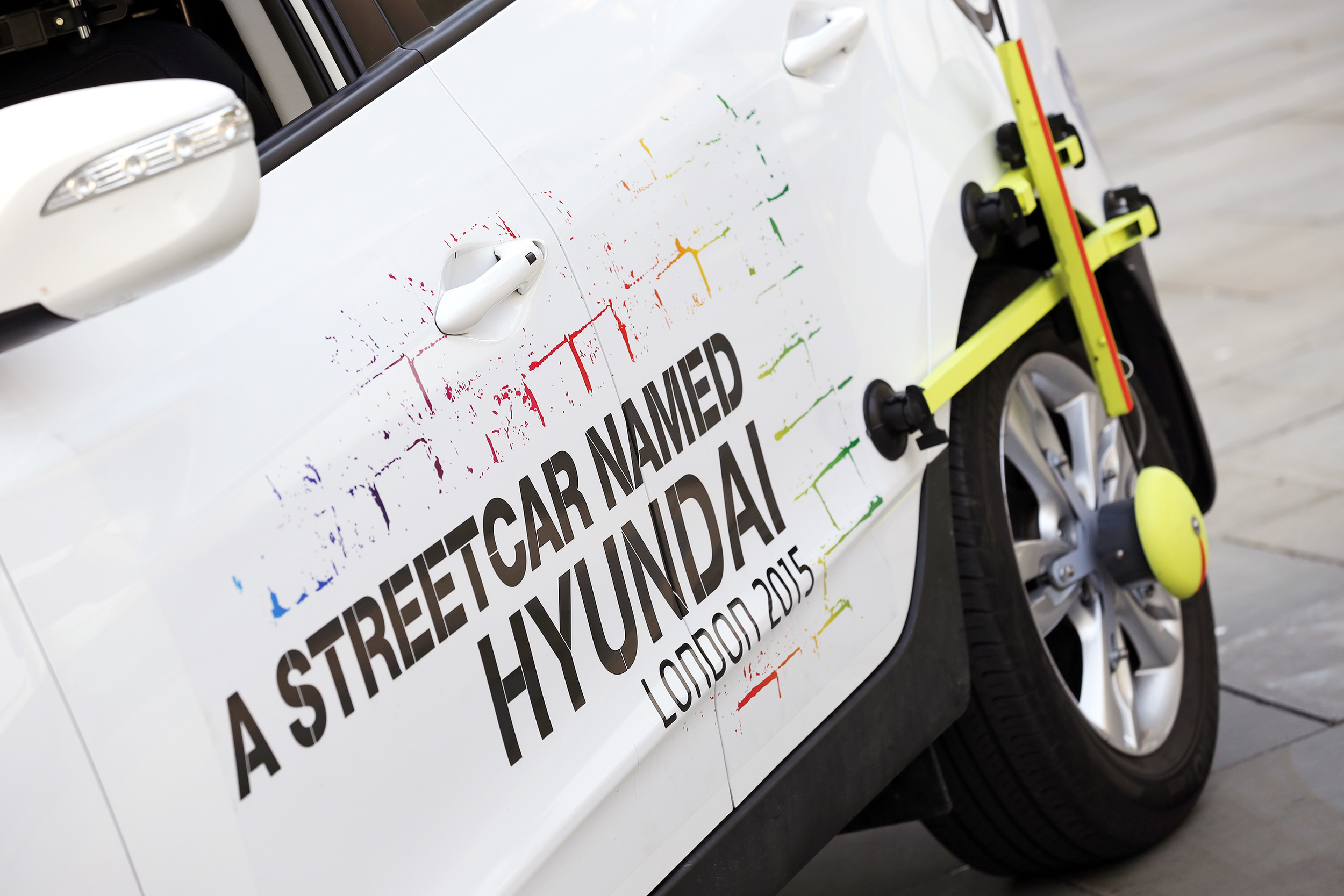

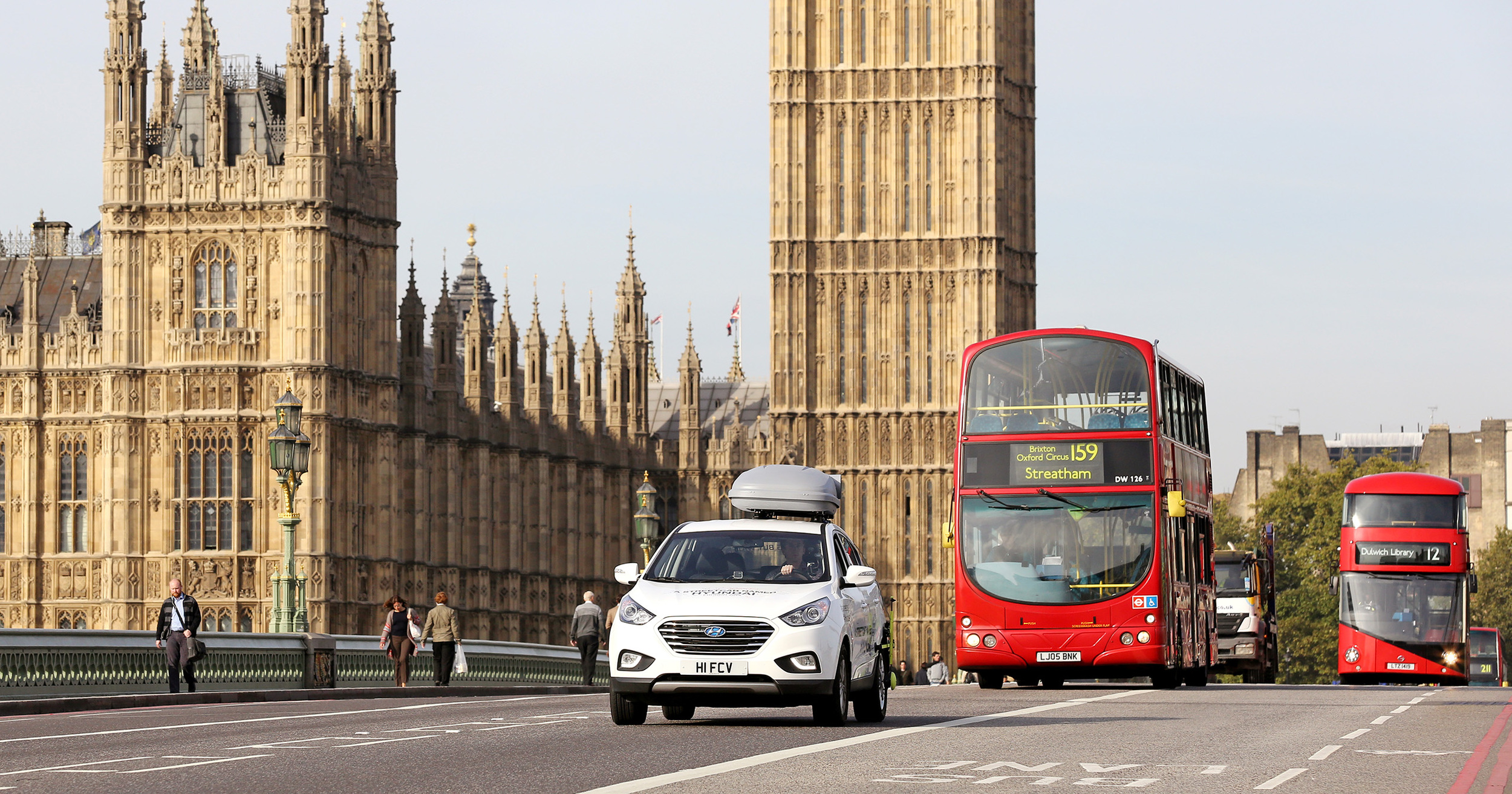
The idea involved driving, photographing and filming every central London street within the 2092 miles detailed in the famous Cabbie 'Knowledge'. Involving 127 participants, the challenge was created by London 2012's Ordnance Survey team to mark the 10-year anniversary of 'Hyundai Motor UK' and was completed in the Hyundai ix35 Fuel Cell, the world's first commercially available hydrogen fuel cell car.
London taxi driver and knowledge teacher of 30 years, Tony Norris said: "The Cabbie Knowledge is world renowned, unique to London and takes an average of 3-4 years to complete. But, this is the first time that the entire six-mile radius has been routed in this way as one continuous drive."
Hyundai created entirely new software to capture the drive, which controlled the camera shutter based on the car's speed, distance travelled and angle of travel to frame the entire journey photographically. The camera took pictures every 6-7 metres delivering 503,919 images - that's 207,000 MB of data. The special ix35 was designed to capture over half a million photos throughout the journey with the images used to create a 6m x 2m mosaic, a digital continuous image of all London's streets as well as a 200.5 second time lapse video to mark the UK company's 2005 heritage.
The final mosaic image depicts Oxford Street, which was voted as the most iconic street in London, and will go on display at City Hall in March 2016, as part of London's Hydrogen Week.
Deputy Mayor for Environment and Energy Matthew Pencharz said: "Energy-efficient transport like these hydrogen fuel cell cars are key to helping improve the capital's air quality and reduce carbon emissions. I'm pleased that Hyundai's project has produced such an interesting portrait of our city with their new hydrogen technology."
Tony Whitehorn, Hyundai Motor UK's President and CEO commented: "We're incredibly proud of how far Hyundai has come in the UK in the short space of 10 years. During this time our brand has been completely transformed through innovation, design and technology - all of which encapsulate the Streetcar Named Hyundai challenge. We are delighted with the results."


The 'elegantly designed, technology packed' G90 hints at the recently-launched Genesis brand's design identity and future direction.
Woong-Chul Yang, Head of Hyundai Motor R&D Centre and Vice Chairman of Hyundai Motor, said, "Genesis' new large luxury sedan G90 will deliver a concept of 'New Luxury' to our customers. The G90 sits at the pinnacle of the Genesis brand and demonstrates how we apply our human-centred values to give our customer true satisfaction in every aspect of the vehicle ownership experience."
As the Genesis brand's flagship model, the G90 is a blueprint for change and innovation says Hyundai. Majoring on 'human-centred' technology combined with engaging driving dynamics, G90 features a raft of world-best safety features and technological innovations which Hyundai says will 'set itself apart in the luxury market'.
The G90 also showcases the Genesis brand's design style of 'Athletic Elegance' - interpreted by the newly-formed Prestige Design Division. Crowned by the Genesis emblem, the grand radiator grille 'combined with sophisticated headlamps communicates the car's dynamic, future-orientated character'.
Hyundai created the Genesis brand for a new generation of discerning consumers and will launch six new Genesis models by 2020.


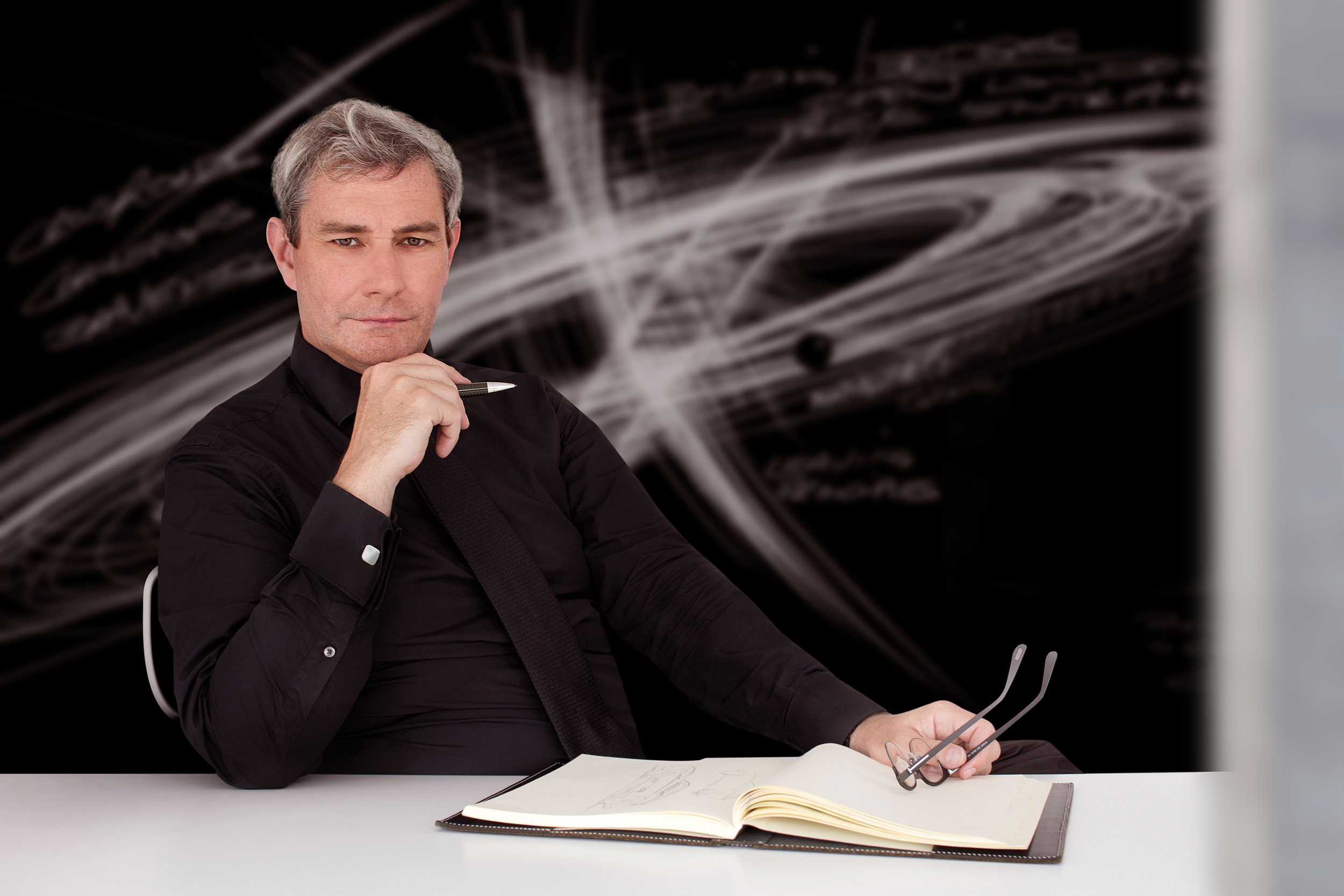

The new brand will deliver 'human-centered' luxury through a range of new models that feature the 'highest standards of performance, design and innovation'.
Hyundai says Genesis has been created for a new generation of discerning consumers, and the stand-alone brand will operate alongside the established Hyundai marque. Six new Genesis models will be launched by 2020 with the aim of competing alongside the world's most renowned luxury car brands.
Genesis models will 'embody four key aspects': Human-focused innovation, refined and balanced performance, athletic elegance in design and hassle-free customer experience. The new cars will be badged with a new wing-type emblem, redesigned from the version used on the current Genesis model to create an 'even more luxurious look'.
"We have created this new Genesis brand with a complete focus on our customers who want smart ownership experiences that save time and effort, with practical innovations that enhance satisfaction. The Genesis brand will fulfill these expectations, becoming a market leader through our human-centred brand strategy," said Euisun Chung, Hyundai Motor Company Vice Chairman.
Hyundai also says the new model line-up will distance itself from the traditional technological overload of brand-focused competitors, concentrating instead on a personalised, hassle-free customer experience. Continuing the customer-oriented approach that flows through every Genesis model, sales and service staff will provide 'rapid and attentive' service to customer's requests.
The Genesis brand will also adopt a new alphanumeric naming structure. Future models will be named by combining the letter 'G' for Genesis with a number, 90, 80 or 70 etc., representing the segment.
To develop a distinctive and differentiated design for the new Genesis brand vehicles, Hyundai Motor has created a Prestige Design Division. From mid-2016 Luc Donckerwolke, who was previously responsible for the design of Audi, Bentley, Lamborghini, SEAT and Skoda models at the Volkswagen Group, will lead this new division alongside his role as Head of the Hyundai Motor Design Center. The work of the new Prestige Design Division will be overseen by Peter Schreyer, as part of his group-wide design responsibilities as President and Chief Design Officer (CDO) of Hyundai Motor Group.
Peter Schreyer commented, "In creating the design signature of Genesis brand cars, we set out to display confidence and originality, creating highly desirable products that present new charm through innovative styling and proportions."
The name 'Genesis', which also means new beginnings, hints at the new values and standards that the brand will bring to the global luxury car market. Initially on sale in the Korean, Chinese, North American and Middle Eastern luxury car markets, the Genesis brand will expand its reach to Europe and other parts of Asia as the model range grows to full strength.
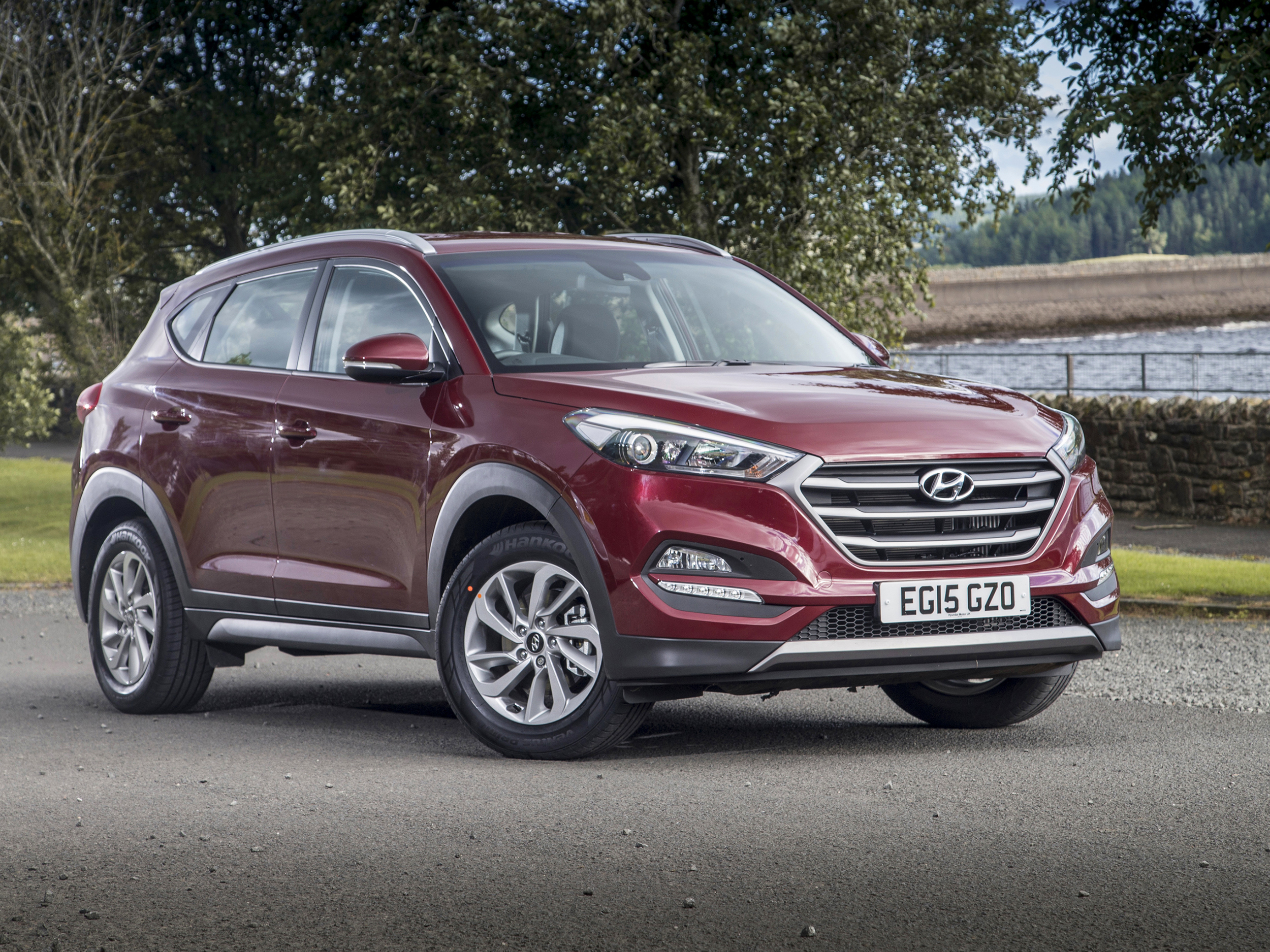

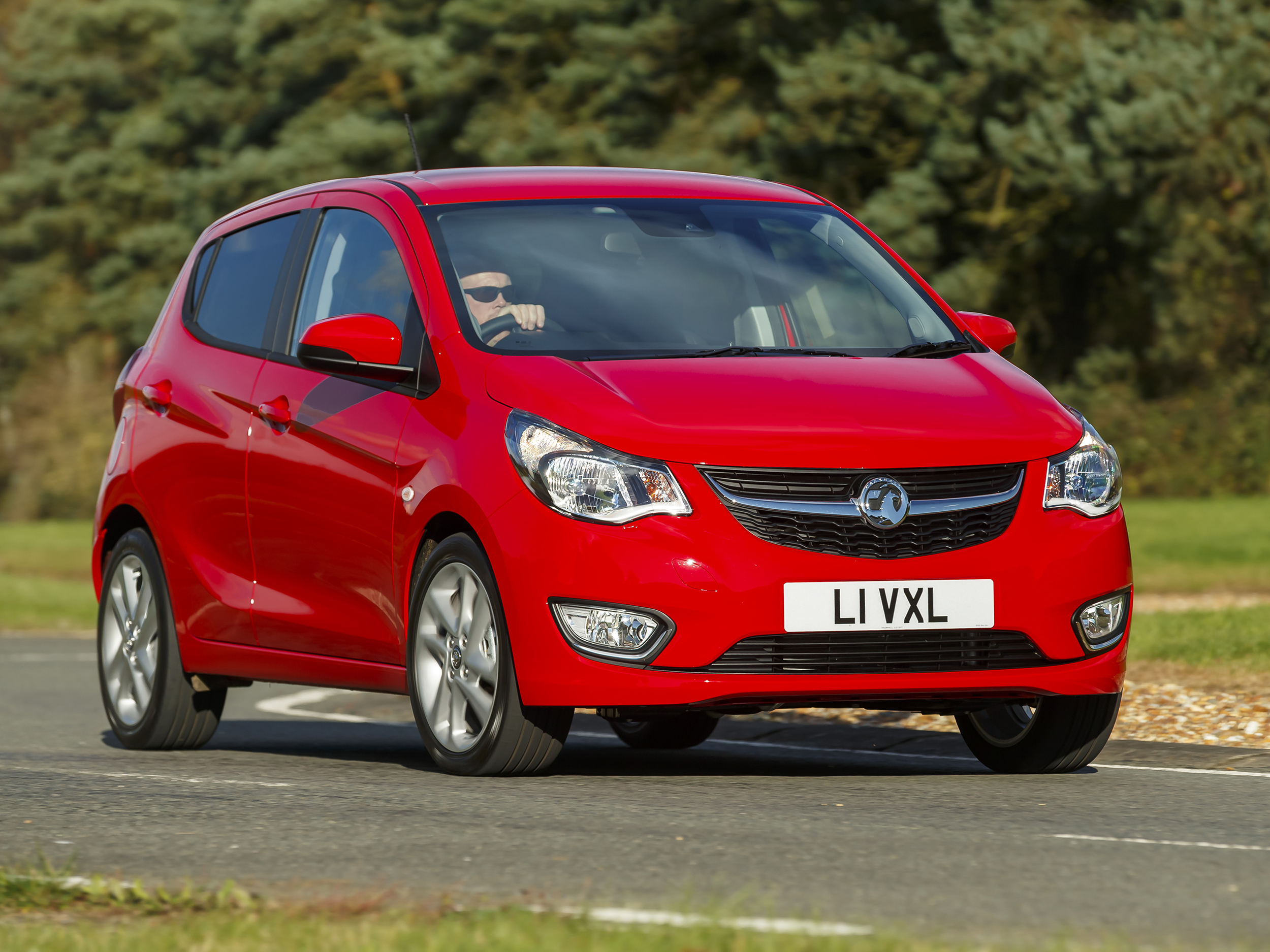
The European car safety performance assessment programme also tested the Vauxhall Viva supermini and Mazda's MX-5 roadster, revealing that while the Tucson topped the latest results, the Viva and and MX-5 fail to reach the 5 stars.
The new generation compact SUV achieved high scores in all areas of assessment, and when compared to its predecessor tested in 2006, the new model showed a 'worthy evolution' in terms of safety all-round, and more specifically in safety assist. Autonomous Emergency Braking (AEB) technology is offered as option on the Tucson but it was not included in the rating as the uptake is not estimated by Euro NCAP to be high enough.
The Vauxhall Viva was awarded four stars, resulting in a 'commendable' score for a car in this popular segment, yet the crash tests revealed the car's lesser-seen side. In the frontal offset test, the head bottomed out the airbag and in the side pole impact the chest was protected poorly. Chest protection offered to the rear small female passenger dummy in the latest full-width rigid barrier test was also weak while the driver slipped under the seatbelt, resulting in elevated risk at knee and femur injuries. Euro NCAP concluded that perhaps with better optimised restraint systems the Viva would have made a bigger impression.
The Mazda MX-5 also achieved a four star rating, as did the Audi TT tested earlier this year. The Mazda combined good all-round performance in crash tests with exceptional pedestrian protection thanks to the deployable bonnet fitted as standard. However, like for the TT, the fitment of the latest crash avoidance technology was felt to be unnecessary by Mazda for the fourth generation roadster. In particular the absence of AEB 'disappoints' says Euro NCAP as many similarly-priced cars in other segments offer this safety equipment at least as option.
Concept Car, Sports Car, Supercars, News
Hyundai has revealed an artist rendering of its all-new Elantra, ahead of the car's imminent launch.
Hyundai has released details for its all-new Tucson's competitive residual values, ahead of its official on-sale date of 3rd September.
Hydrogen Fuel Cell Car, News, SUV

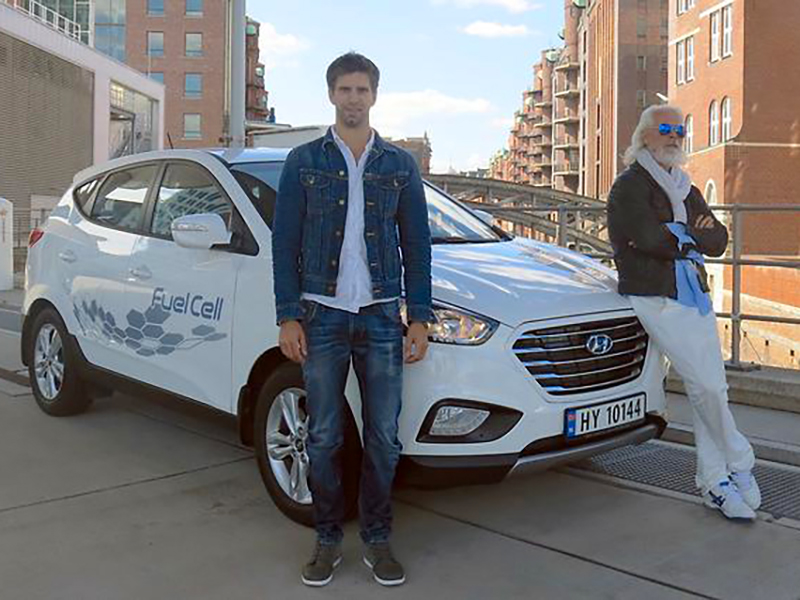
Arnt-Goran Hartvig (Sports Scientist) and Marius Bornstein (Master of Physics) travelled around the clock on public roads in Germany, emitting nothing but water vapour from the fuel cell electric vehicle. To achieve this distance, the two Norwegians covered the 300-plus kilometre route between Vatenfall's hydrogen station in HafenCity, Hamburg and a Shell hydrogen station in Sachsendamm, Berlin as many times as possible in 24 hours. Refuelling the car takes as little as three minutes, enabling the drivers to maximise the distance covered.
Their route included city driving as well as high-speed roads, testing the suitability of the Hyundai ix35 Fuel Cell for everyday use in all situations. "We wanted to see what the combination of a state of art fuel cell electric vehicle and ditto hydrogen refuelling station are capable of today. The result is stunning", stated the team after accomplishing their journey.
This accomplishment by the duo is the latest in a series of challenges to showcase the potential of fuel cell technology. In June last year the two chose the ix35 Fuel Cell to travel a record 700 kilometres on one tank of hydrogen. They have also driven from Oslo to Monaco, refuelling only at the hydrogen stations already installed along the 2,260-kilometre route.
The ix35 Fuel Cell is fitted with a 100 kW (136 ps) electric motor, allowing it to reach a maximum speed of 160 km/h. It produces no harmful emissions - only water vapour comes from the tailpipe - and has an official driving range of almost 600 kilometres on one tank of hydrogen.
Thomas Schmid, Chief Operating Officer at Hyundai Motor Europe, commented: "This endurance drive highlights both the practicality of our fuel cell electric vehicle's long driving range and the environmental credentials of our technology. Our Fuel Cell programme has already delivered many world firsts, so it is fitting that the Hyundai ix35 Fuel Cell has once again delivered a new benchmark."
Prices for the Hyundai ix35 Fuel Cell vehicle start from £53,105 OTR with part-funding from the HyFive project - saving customers nearly £15,000 off the un-funded on-the-road-price of £67,985.





Showcasing the new i20 hatchback and the i20 Coupe, the film is the fifth installment of the 'Honest Series'. The latest episode features hapless Hyundai car salesman, George who, as ever, has to deal with some difficult customers: this time a feuding couple (Brook & Stourton) who can't agree over anything, let alone whether they want the i20 or the i20 Coupe. The series of films have been designed to deliver engaging content 'with inherent social media currency' - as well as showing off Hyundai's model range, whilst upping the ante of the comedy.
Writer and director, Ollie Parsons explained: "We treated this series like a sitcom - not an ad - writing and producing it as you would any other TV comedy. This isn't only about making the audience laugh; it is also about quickly engaging them with the story and establishing the characters."
Adam Nickson, Head of Brand Strategy and Communications, says: "We wanted to push the boundaries with this new film and to entertain our audience. The latest episode, featuring arguing couple Kelly Brook and Tom Stourton, plays out a situation that many consumers may be able to relate to - we just took things that one step further!
"Laughter has long been known for its benefits to health and happiness but it's also a great way of building positive social relationships and that's precisely what we hope to achieve with this series."
To view the latest video, visit the Hyundai UK YouTube channel here https://youtu.be/sb07y7n6KkU
Concept Car, Pick-up, Motorshow
Hyundai has revealed a crossover truck concept at the Detroit Auto Show. The Santa Cruz is designed to offer more efficiency and manoeuvrability, and is powered by a 2.0-litre turbo diesel delivering 190bhp. The crossover is purposefully compact, focusing on the younger 'urban generation' who live in the city and who face tighter on street parking and more congestion. Although the concept has four doors and seating for five, Hyundai says its overall footprint is similar to a small SUV.